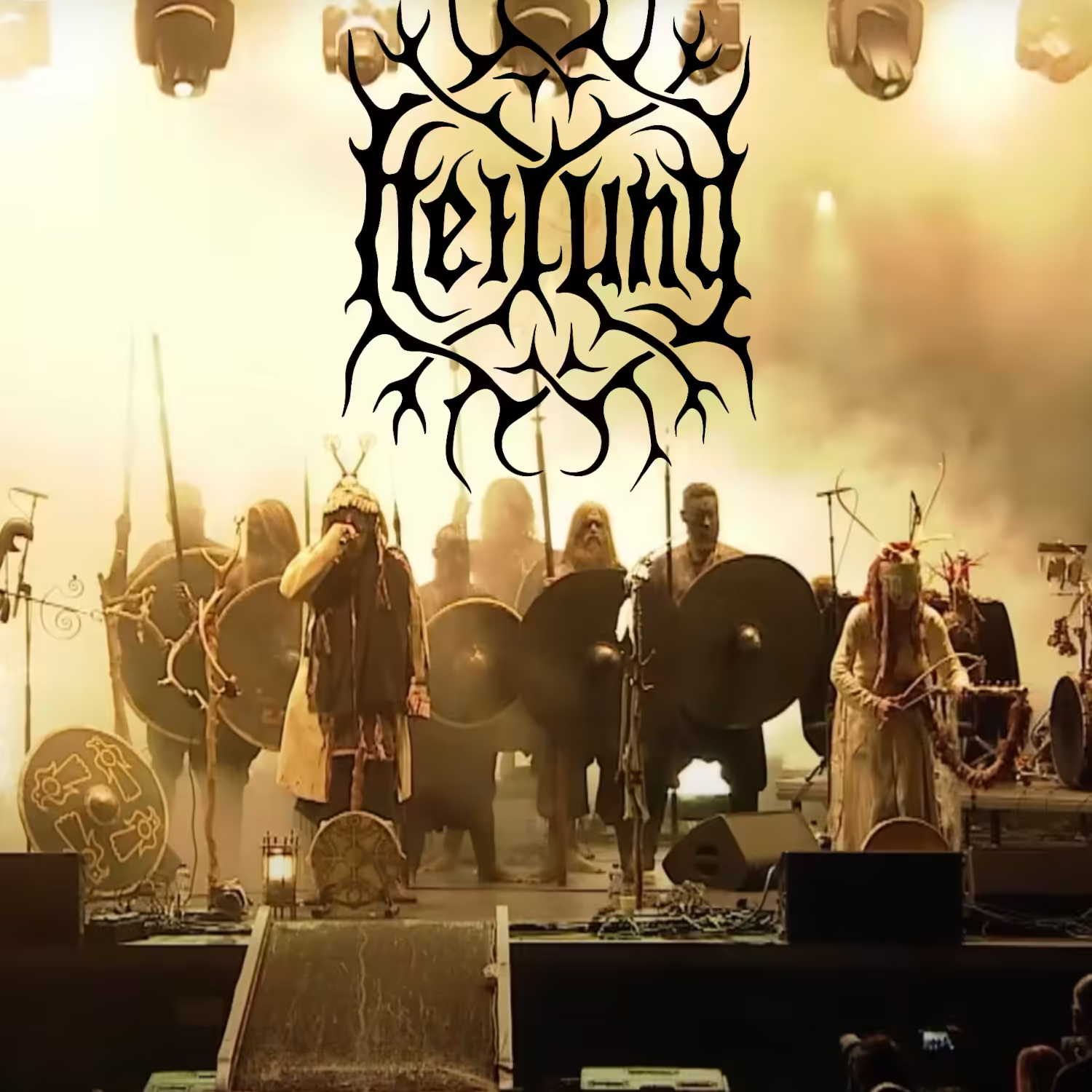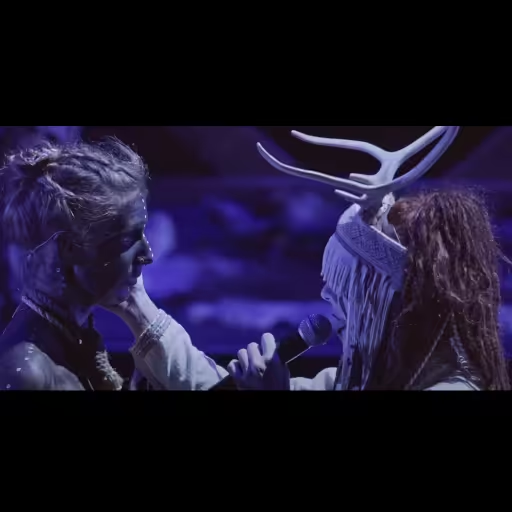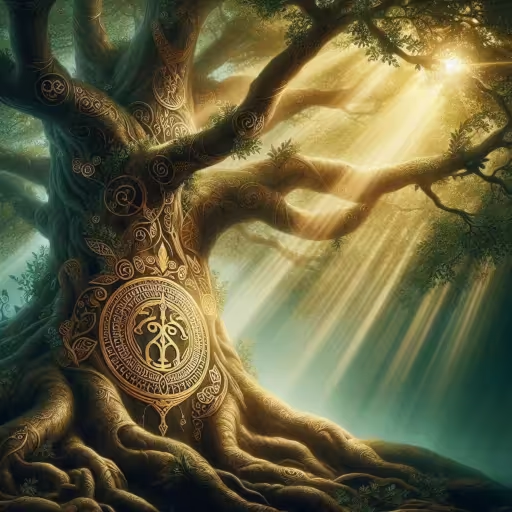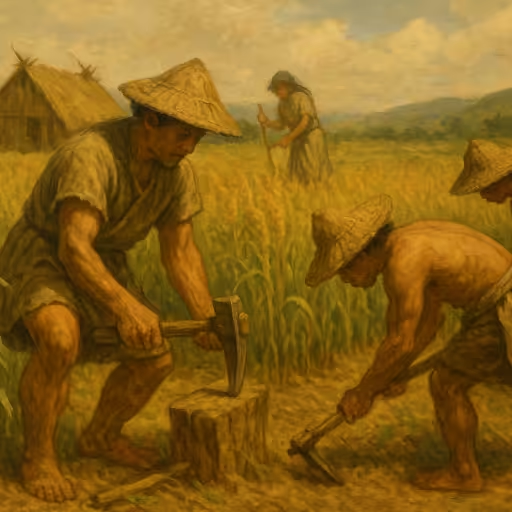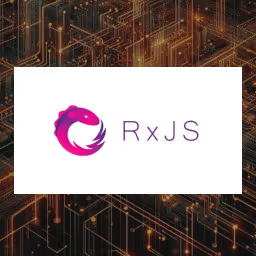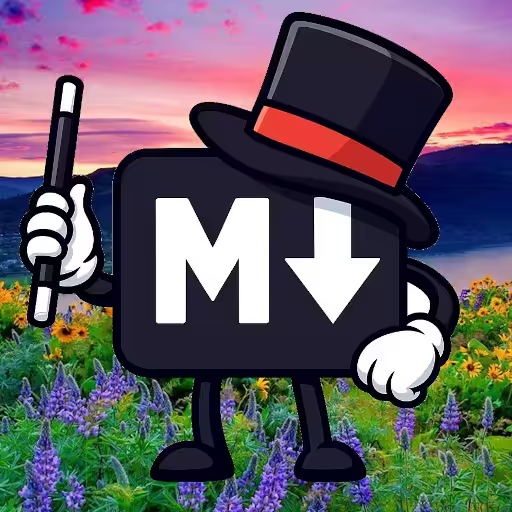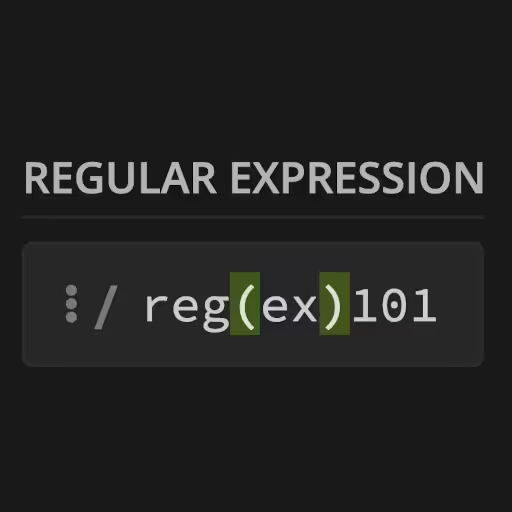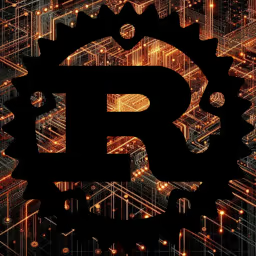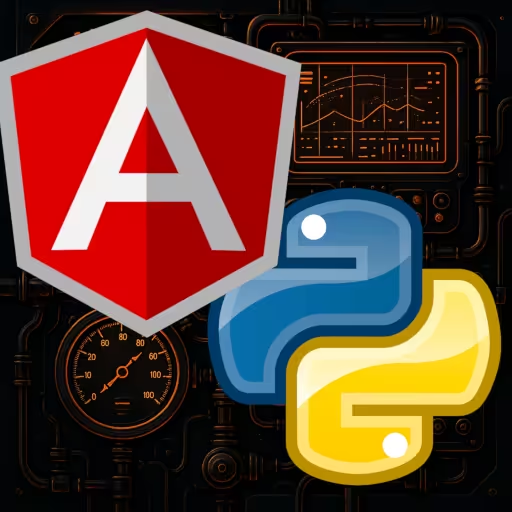Heilung's "Alfadhirhaiti": An Invocation of the All‑Father
Heilung ("healing" in German) is an experimental folk band formed in 2014, consisting of members from Denmark, Norway, and Germany. They're renowned for their ritualistic performances, combining historical reenactments, spiritual chanting, and ancient instrumentation. Their music is deeply rooted in the traditions of the Iron Age and Viking eras (circa 400-1000 AD), intended to create a trance-like, meditative state.
Heilung does not just play music—they recreate rituals. Their intent is not entertainment alone, but something closer to spiritual invocation or sacred ceremony, connecting listeners directly with ancient Northern European spirituality.
⚔️ Detailed Analysis of "Alfadhirhaiti"
The song is an invocation and hymn to Odin (Wōdanaz/Woden), chief deity of the Norse and ancient Germanic pantheon. The lyrics are a poetic list of Odin's titles, sacred companions, weapons, and symbols of his power—interwoven with chants that mimic authentic Proto‑Germanic and Norse ritual formulas.
1. Structure and Meaning of the Lyrics
Alfadhirhaiti (PGmc for "He is called All‑Father") emphasizes Odin's manifold aspects, invoking him by sacred names and objects:
- Draupnir — Odin's magical ring, symbolizing endless abundance.
- Geri Freki — Odin's wolves, representing insatiable hunger for wisdom and battle prowess.
- Sleipnir — Odin's eight‑legged horse, signifying speed, mobility, and transcendence between worlds.
- Gungnir — Odin's spear, symbolizing authority, decisive power, and magical sovereignty.
These symbols establish Odin as a warrior‑shaman deity—god of war, magic, poetry, death, and wisdom.
2. Chants and Ritualistic Language
The chants "Haegolae Haegolae Haegolae Wiju Bi Gojze" and "Gaegogae Gaegogae Gaegogae Ginu Gahelija" deliberately evoke early Germanic ritual language (c. 400—600 AD):
- Haegolae closely resembles Proto‑Germanic "hail," meaning to hallow or bless.
- Wiju Bi Gojze roughly "we consecrate/bless," indicating purification.
- Gaegogae Ginu likely "behold the wide one," a shamanic summons of Odin.
- Gahelija derives from PGmc ga‑hailagījaz or hailagōną ("made holy," "the holy one"), the same root behind German geheiligt (i.e. "made holy").
Their repetitive, hypnotic quality mirrors ancient ceremonial chants used to induce altered states of consciousness.
Is 'Alfadhirhaiti' Old Norse?
Not exactly — while many of the words you see are recognizably Old Norse names of Odin's attributes (Draupnir, Geri Freki, Sleipnir, Gungnir, etc.), the text of "Alfadhirhaiti" is actually a modern reconstruction that blends Proto‑Norse/Proto‑Germanic forms with bits of Viking‑Age Old Norse and other ancient Germanic tongues rather than being a straight Old Norse poem. Heilung themselves describe their work as "amplified history from early medieval northern Europe," drawing on runic inscriptions, Merseburg charms and various medieval texts to create a ritual chant rather than quoting a single historic language corpus.
The sequence you've listed is essentially a litany of Odin's many epithets, lifted from mythological and runic sources. For example, Draupnir ("The Dripper") names Odin's gold‑multiplying ring; Geri Freki ("the Ravenous and the Greedy") and Sleipnir ("the Slipper") are his wolves and eight‑legged horse; and Gungnir ("the Swaying One") is his spear. These are authentic Old Norse terms, but Heilung often reshapes their pronunciation and spelling to fit a broader ancient‑Germanic aesthetic (see the translation of Alfadhirhaiti.
In performance this becomes more than a linguistic exercise: you're hearing throat‑singing, shamanic drumming and vocal intonations meant to evoke Iron‑Age ritual. Instruments range from bone‑drums and goat‑skin rattles to reconstructed bronze Age cups, and the vocals mix whisper, chant and overtone singing. The end result is a deliberately immersive "ritual soundscape" rather than a faithful recitation of any one historic poem.
Complete Lyrics for the Heilung Song 'Alfadhirhaiti'
Here's are the complete lyrics for Heilung's 'Alfadhirhaiti':
Alfadhirhaiti
(He is called All-Father)
Draupnir
(The Dripper — Odin's gold-multiplying ring)
Geri Freki
(The Ravenous and the Greedy — Odin's wolves)
Sleipnir
(The Slipper — Odin's eight-legged horse)
Gungnir
(The Swaying One — Odin's spear)
Haegolae Haegolae Haegolae Wiju Bi Gojze
(Hail, hail, hail — we sanctify with a blessing)
Gaegogae Gaegogae Gaegogae Ginu Gahelija
(See, see, see — the wide one, the loud caller)
(repeat this chant several times)
Haugen Maunen
(Mound and Moon — life and death united)
Ok Alfadhir heitir
(And he is called All-Father)
Fimbulþulr Fjölnir
(The Mighty Sage, the Much-Knowing One)
Uðr Úlfrœgni
(The Wet One, the Wolf-Knowing One)
Þekkr Þuðr
(The Beloved, the Mighty One)
Óski Ófnir
(The Wisher, the Inciter)
Rǫgnir Rauðr
(The Ruler, the Red One)
Grímnir Göndlir
(The Masked One, the Wand-Wielder)
Hlefreyr Hangatýr
(The Healing Lord, the God of the Hanged)
Njǫlstapi Nauðhvindr
(The Needle-Stabber, the Binder of Need)
Jǫlfuðr Jafnhárr
(The Yule-Father, the Even-High)
Atriðr Alfǫðr
(The Rider of All, the All-Father)
Siðgrani Sigfǫðr
(The Long-Beard of Custom, the Father of Victory)
Dǫggverðgjafi Dreyfvarpi
(The Giver of Dew-Food, the Sprinkler)
Bileygr Biflindi
(The Shifty-Eyed, the Trembler)
Margviðr Miðvitnis
(The Much-Forest, the Middle-Wise)
Lǫgðungr Launhirðir
(The Lawgiver, the Secret Keeper)
Yggr ok Yngvi
(The Terrible One and the Young Lord)🔍 Rune Analysis (Futhorc Translations)
The expanded runic alphabet (used 400-1100 AD in Europe) reflected authentic Old English and Old Norse pronunciation:
Here are some runic transliterations of the Anglo-Saxon Futhorc translation:
| Original Old English | Meaning / Context | Anglo-Saxon Runes |
|---|---|---|
| Alfæder hātte | He is called All-Father | ᚪᛚᚠᚫᛞᛖᚱ ᚻᚪᛏᛏᛖ |
| Drēopan | The Dripper (Draupnir) | ᛞᚱᛖᚩᛈᚪᚾ |
| Gīfra and Fræcne | The Ravenous and the Greedy (wolves) | ᚷᛁᚠᚱᚪ ᚪᚾᛞ ᚠᚱᚫᚳᚾᛖ |
| Slīdan | The Slipper (Sleipnir) | ᛋᛚᛁᛞᚪᚾ |
| Swēofan | The Swaying One (Gungnir) | ᛋᚹᛖᚩᚠᚪᚾ |
| Hālg! Wē wīgiað mid blētsunge | Hail! We consecrate with blessing! | ᚻᚪᛚᚷ ᚹᛖ ᚹᛁᚷᛁᚪᚦ ᛗᛁᛞ ᛒᛚᛖᛏᛋᚢᚾᚷᛖ |
| Gesieh! Þæt brāde, clypiende! | See! The wide, loud caller! | ᚷᛖᛋᛁᛖᚻ ᚦᚫᛏ ᛒᚱᚪᛞᛖ ᚳᛚᚣᛈᛁᛖᚾᛞᛖ |
| Beorg and Mōna | Mound and Moon (life/death symbolism) | ᛒᛖᚩᚱᚷ ᚪᚾᛞ ᛗᚩᚾᚪ |
| And hē is hātte Alfæder | And he is called All-Father | ᚪᚾᛞ ᚻᛖ ᛁᛋ ᚻᚪᛏᛏᛖ ᚪᛚᚠᚫᛞᛖᚱ |
These runes, when spoken aloud, echo ancient poetic rhythms and reinforce the ceremonial aura of the lyrics.
⚡ Other Norse Gods in Elder Futhark
These Elder Futhark runes (an older set of the runic alphabet circa 150-800 AD) represent well-known gods in Old German/Norse:
- Wodan (Odin): ᚢᛁᛏᚨᚾ (Witan/Wōdanaz, wise one)
- Donar (Thor): ᛞᛟᚾᚨᚱ (Thunder god)
- Tiwaz (Tyr): ᛏᛁᚢᚨᛋ (War god, justice)
- Fro (Freyr): ᚠᚱᛟ (Fertility, peace)
- Freyja: ᚠᚱᛖᚢᛃᚨ (Love, magic)
- Forseti: ᚠᛟᚱᛋᛖᛏᛁ (Justice, peace)
- Heimdall: ᚺᛖᛁᛗᛏᚨᛚᛚ (Guardian, watcher)
- Loki: ᛚᛟᚲᛁ (Trickster, change)
These runes help visualize and invoke the energy and characteristics of each deity.
📖 Conclusion
Heilung's music, especially "Alfadhirhaiti," serves as a powerful, historically-informed invocation of Odin's sacred mysteries. The poetic lyrics, ancient chants, and careful use of runic inscriptions immerse listeners into an authentic experience of ancestral spirituality.
The runic translations you provided not only maintain historical integrity but enhance the mystical atmosphere, grounding listeners in the profound heritage of Northern Europe's early medieval spiritual traditions.
